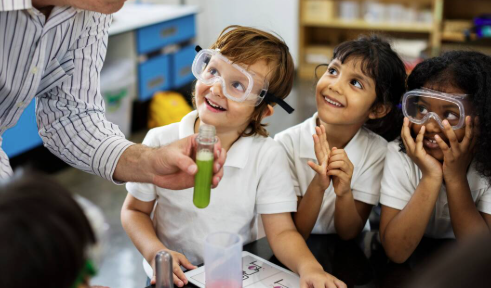Classrooms today are constantly evolving. With new teaching methods, shifting schedules, digital tools, and diverse learning formats, students who stay adaptable are better prepared to succeed. Adaptability is the ability to adjust to new situations, stay positive through change, and find ways to thrive in different environments. By developing this skill, students can become more resilient, confident, and effective learners.
One way to build adaptability is to keep an open mind. Not all changes feel comfortable at first, but being willing to try new approaches can lead to valuable learning experiences. Whether it’s adjusting to a new teacher’s style, learning through hybrid instruction, or navigating new classroom rules, students benefit from approaching change as an opportunity instead of a setback. This mindset helps them remain calm, flexible, and curious even in unfamiliar situations.
Organization helps students manage change more easily. Keeping track of assignments, due dates, and resources with tools like planners, apps, or checklists reduces stress when routines shift. Being organized creates a foundation that allows students to adjust to new expectations with less disruption. Having a well-structured binder, digital folder system, or consistent note-taking method helps students stay on top of responsibilities even when the format of a course or the delivery of instruction changes unexpectedly.
Communication is also essential. Students should feel encouraged to ask questions, seek clarification, and share their concerns with teachers and peers. Talking about challenges and being honest about what is or isn’t working helps everyone adapt more effectively and collaboratively. Regular check-ins with teachers, participation in class forums, and respectful dialogue with classmates can create a supportive learning environment where change is managed as a team.
Flexibility in thinking is another key part of adaptability. Students who are willing to explore different solutions, change strategies, or adjust study habits can respond more effectively to academic challenges. For instance, if a group project changes direction or a test format shifts, adaptable students reframe the situation and look for ways to do their best under new conditions. Trying new study apps, revising study schedules, or seeking help in different formats like videos or tutoring can all be signs of flexible learning.
Developing a growth mindset is also crucial. Believing that abilities can improve through effort helps students embrace learning from mistakes and persist through difficult transitions. This mindset encourages students to view change as part of the learning journey rather than as a barrier. When students say things like “I haven’t learned this yet” instead of “I can’t do this,” they are practicing adaptability and resilience.
Self-care supports adaptability as well. Getting enough rest, staying active, eating well, and taking breaks all contribute to a balanced routine that makes it easier to manage change. When students feel their best physically and emotionally, they’re more equipped to handle shifting classroom environments. Practicing mindfulness, journaling, or simply taking short walks can refresh the mind and reduce the stress that often accompanies change.
Peer support also plays an important role. Working with classmates in study groups or discussion circles gives students opportunities to share strategies and hear how others are adapting. These conversations can provide reassurance, new perspectives, and creative ways to tackle unexpected changes.
Technology is another tool that supports adaptability. Learning to use a variety of digital platforms for assignments, presentations, or group work helps students stay flexible and confident. Being familiar with both in-person and virtual tools makes it easier to transition between classroom formats as needed.
Teachers can encourage adaptability by modeling it themselves and by recognizing students who make positive adjustments. Classroom activities that involve problem-solving, collaboration, and reflective thinking naturally build the skills students need to respond to change with confidence. Creating a culture where learning through change is seen as a strength helps students feel more comfortable stepping outside their comfort zones.
In summary, staying adaptable in changing classrooms is about being open to new experiences, staying organized, communicating clearly, and keeping a flexible mindset. It also involves supporting personal well-being, collaborating with others, and using technology as a learning ally. With these habits, students can navigate change with confidence and continue growing in any learning environment. The ability to adapt will not only serve students well during their academic years, but also prepare them for lifelong learning and future success in a world that is always evolving.


